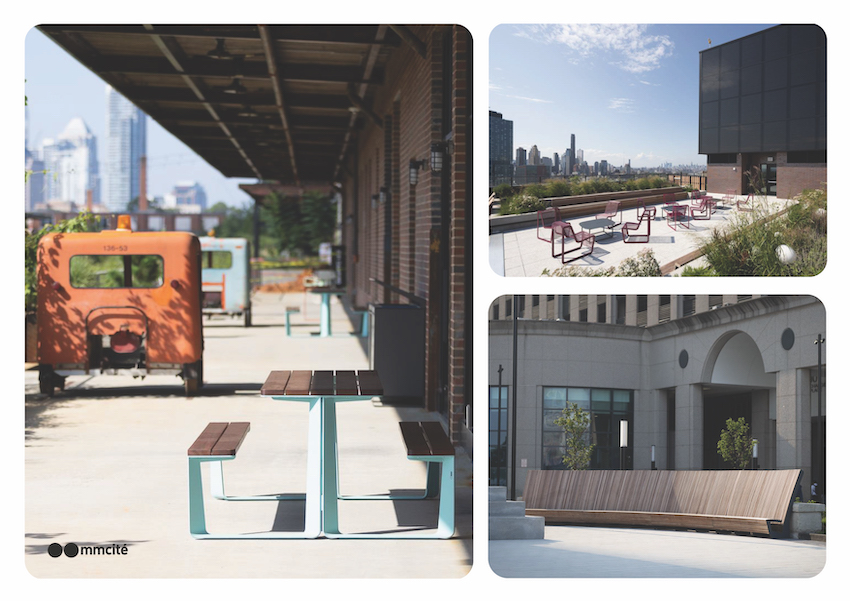A well-designed public space involves thoughtful selection of materials. Not only must they be durable and resilient to withstand heavy use and weather, but increasingly, architects and designers are seeking to specify materials and products for their sustainability─for the benefit of both human health and that of the planet. This CE focuses specifically on sustainable materials and public furniture, how to evaluate materials for sustainability, and the implications of different selections for the global natural resource bigger picture. It looks at key factors for specifying public furniture and examines the most commonly used materials (namely, wood, metal, concrete, and wood alternatives), including the pros and cons of each as viewed through the lens of sustainability. To round out the discussion, the course addresses broader considerations of sustainable material selection, including material life cycle, recyclability, and upcycling.

Photo courtesy of mmcité
Three images featuring public furniture in diverse, urban settings.











